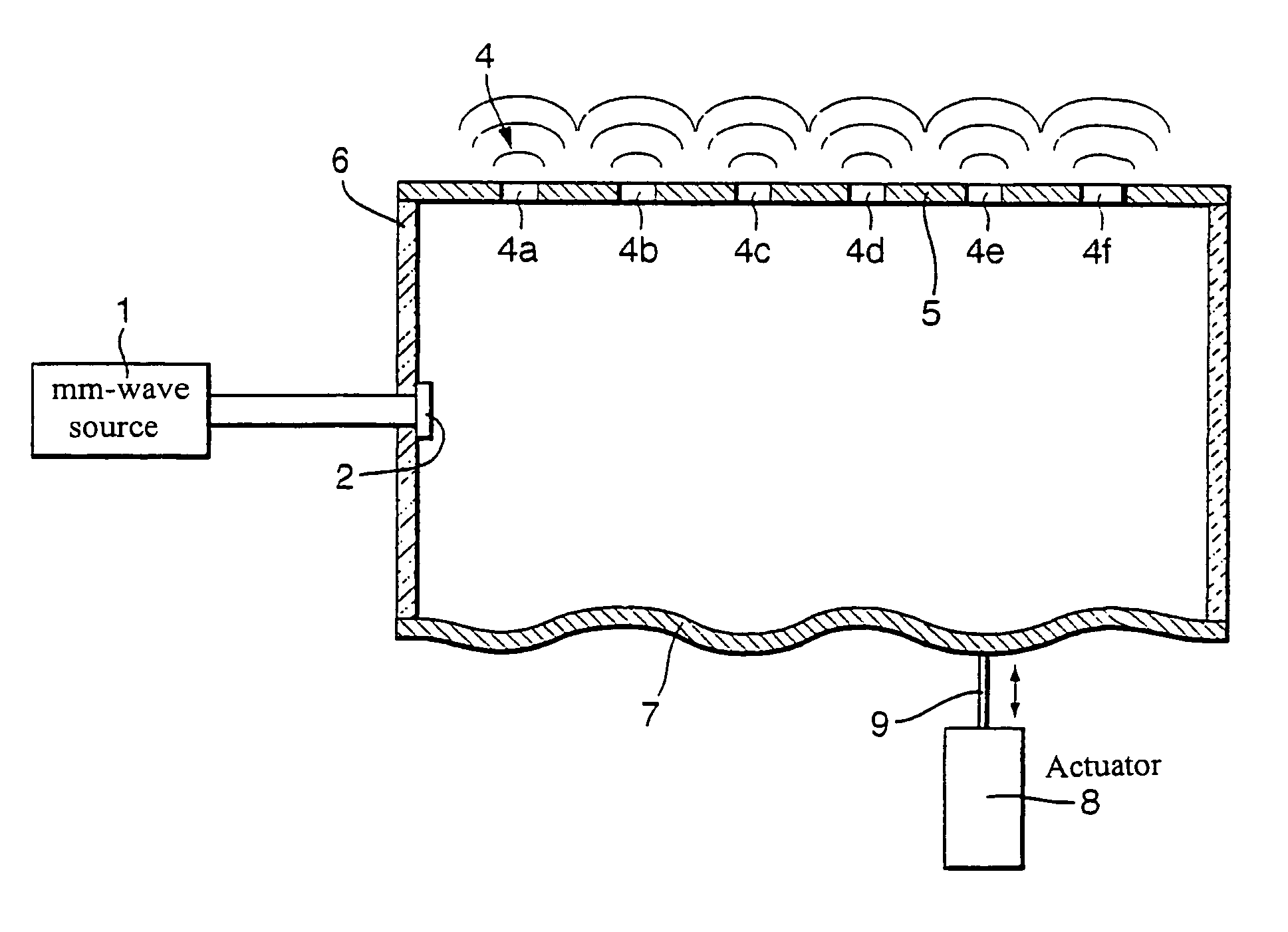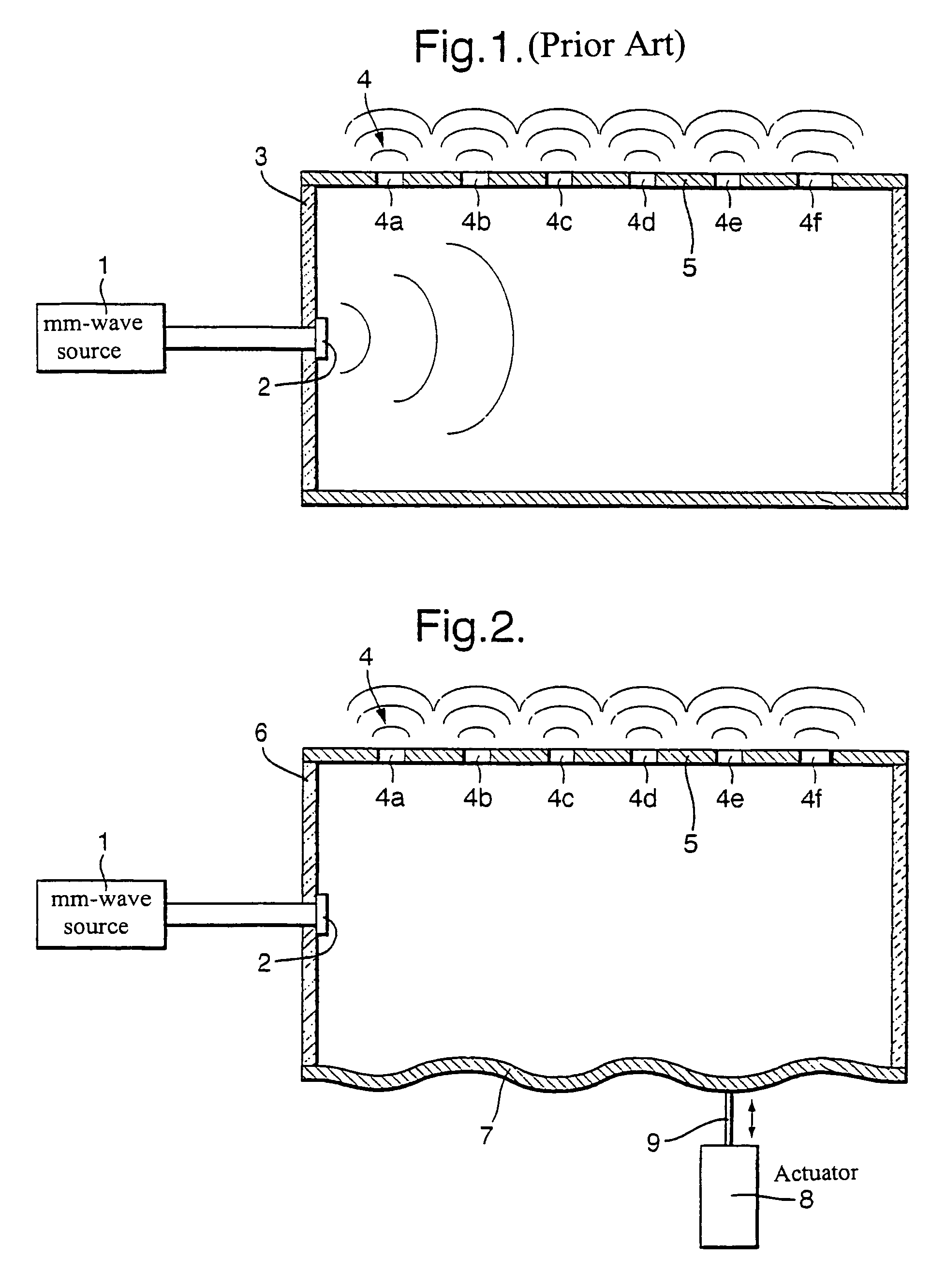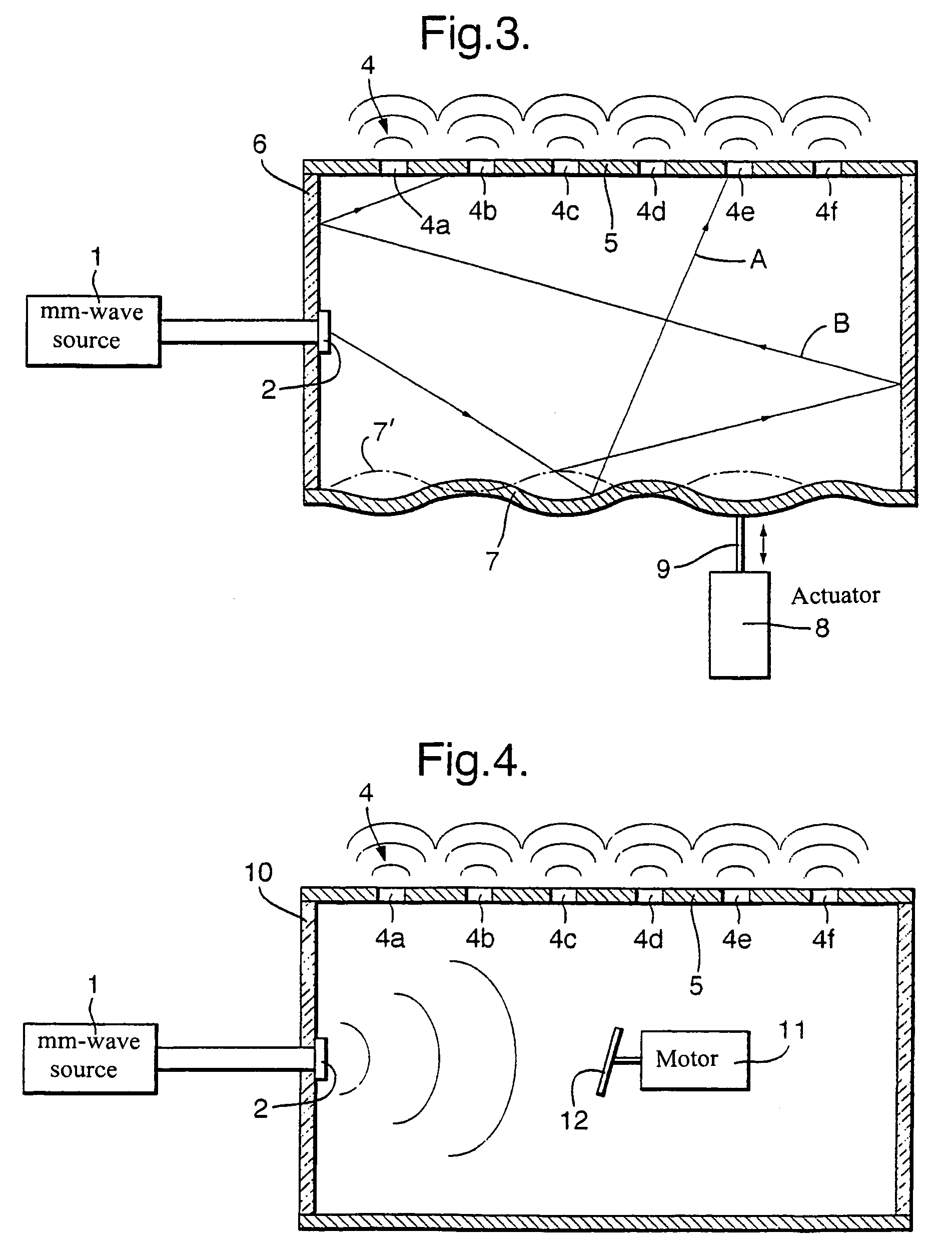Millimetre and sub-millimetre wave illumination system
- Summary
- Abstract
- Description
- Claims
- Application Information
AI Technical Summary
Benefits of technology
Problems solved by technology
Method used
Image
Examples
first embodiment
[0040]FIG. 2 shows the current invention. Primary source 1 is connected to container 6 such that the output of source 1 is within the container 5, as shown in FIG. 1. The container 6 is generally similar to that shown in FIG. 1 but is arranged such that one internal wall 7 is able to flex when driven by an actuator 8. Actuator 8 has a connection rod 9 coupled to the wall 7, and this connection rod 9 moves in and out as indicated by the arrows. Such movement of the rod 9 will cause the wall 7 to move, as shown in exaggerated form in FIG. 2. Typically, flexure of the wall 7 of even as little as a millimeter is sufficient to change the radiation field state or states within the container enough to have the effect of changing the radiation power spatial variation from the illumination system. Although actuator 8 is shown positioned outside the container 6, it may equally well be positioned within the container 6.
[0041]The actuator is preferably arranged to flex the wall 7 repeatedly at ...
second embodiment
[0044]FIG. 4 shows the current invention. Here, a primary source 1 again has an output 2 that feeds into a container 10. The container 10 is similar to that shown in FIG. 1, having exit apertures 4, and metallic inside walls. However, in this embodiment the container 10 also contains an electric motor 11 coupled to a skew-mounted metallic disk 12. The disk 12 is mounted such that it is in the path of at least some of the radiation from output 2. In practice, the disk can be mounted in any convenient location within the container 10.
[0045]The motor 11 is arranged to rotate the disk 12 when the illuminator is in use. Radiation that hits the disk will then be reflected away according to the position of the disk at that instant. As the disk rotates the radiation will reflect within the container 10 in different modes, and so the illumination spatial variation will be continuously changing. The motor is preferably arranged to rotate at a rate high enough to ensure that the modal change w...
fourth embodiment
[0047]FIG. 5 shows the current invention. A primary source 1 is shown connected to a container 10, the container 10 being generally similar to that of the container 10 of FIG. 4. The output of source 1 feeds into a millimeter wave switch box 13 that has four individual outputs 14a-14d. Switching circuitry within the switch box is able to select which of the four outputs 14 the energy from the source 1 is directed towards. The switch box 13 is preferably a P.I.N diode switched device, as this is capable of switching very rapidly. Millimeter wave switches suitable for this application are manufactured by Millitech, based at Northampton, Mass. 01060, USA. Electromechanical switches are also suitable for implementing this embodiment, but cannot switch as rapidly.
[0048]In use, the primary source 1 provides energy at the wavelength of interest to the switch box 13 which, at any given time, is arranged to direct the energy to one of the four outputs 14. Output 14d is shown emitting radiati...
PUM
 Login to View More
Login to View More Abstract
Description
Claims
Application Information
 Login to View More
Login to View More - R&D
- Intellectual Property
- Life Sciences
- Materials
- Tech Scout
- Unparalleled Data Quality
- Higher Quality Content
- 60% Fewer Hallucinations
Browse by: Latest US Patents, China's latest patents, Technical Efficacy Thesaurus, Application Domain, Technology Topic, Popular Technical Reports.
© 2025 PatSnap. All rights reserved.Legal|Privacy policy|Modern Slavery Act Transparency Statement|Sitemap|About US| Contact US: help@patsnap.com



